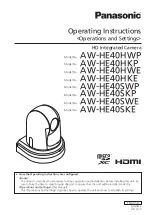
71
USB data carrier is not recognised
• The screen/DVR can only be operated with USB data carriers up to a capacity of 1 TB.
• The screen/DVR can only handle the file format FAT or FAT32, but not, e.g., NTFS.
• Format the USB data carrier with the corresponding function of the screen/DVR, see chapter 11. c); all
data on the USB data carrier will be lost.
• Select the right data carrier for saving (either memory card or USB data carrier; see chapter 11. d).
• Switch off the screen/DVR and then on again.
• If a USB hard disc is connected, check if it is switched on.
• Use a USB hard disc with a dedicated mains unit.
Recordings cannot be saved
• Is the data carrier full? Insert a new, empty memory card or connect a new, empty USB data carrier.
• If necessary, activate automatic overwriting of the memory card or the USB data carrier; see chapter 11
b). The oldest recordings are overwritten with the respective current recording here and will be lost.
When overwriting is deactivated, no further recordings can be saved when the data carrier is full.
• Format the memory card or the USB data carrier with the corresponding function of the screen/DVR; see
chapter 11. c). All data on the memory card or the USB data carrier will be lost.
The screen/DVR can only handle the file format FAT or FAT32, but not, e.g., NTFS.
• If problems occur when saving on a microSD/microSDHC memory card, observe that it corresponds at
least to “Class 4” or higher; see chapter 8. a).
No audio signal from the radio camera
• The screen/DVR offers setting of the volume, but the radio cameras have no microphone.
Whistling/humming during audio playback
• The screen/DVR offers setting of the volume, but the radio cameras have no microphone.
Reduce the volume to the minimum.
Recording cannot be played back
• While one or several radio cameras are recording, no recording can be played back.
















































